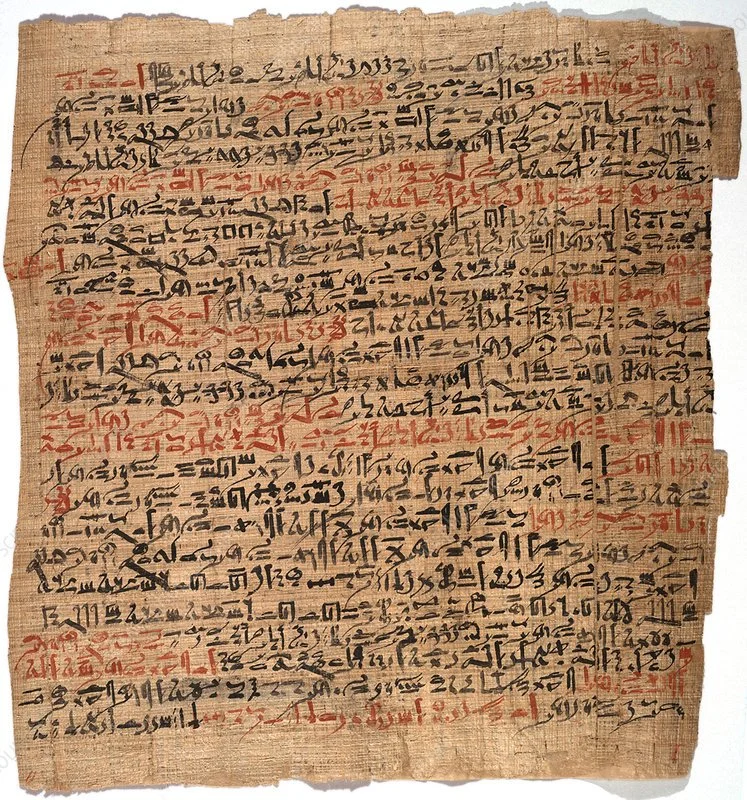Did you ever wonder when the brain was formally defined? Well, the earliest reference of the word “brain” in human records is found in an ancient Egyptian document called the Edwin Smith Surgical Papyrus, dating back to 17th century BC!
Edwin Smith Surgical Papyrus
It's also the 1st medical document in the history of mankind. This medical document primarily highlighted the symptoms, diagnosis, and treatment of 28 head/spine injury cases! Like:
Associating a temporal lobe fracture with aphasia
Spinal cord injury with quadriplegia
Lasegue’s sign for nerve irritation
Very impressive for it's time! In fact, the ancient Egyptians further described the brain's wrinkles (composed of gyri/sulci) and heart pulse as:
"those ripples that happen in copper through smelting, with a thing in it that throbs and flutters under your fingers like the weak spot of the crown of a boy before it becomes whole."
Throughout the surgical papyrus, you'll see some ancient neuroanatomy terms (that are commonly used today!) Written in hieroglyphs, from left to right: the word "brain", cerebrospinal fluid, the meninges (protective membrane layer), and cerebral cortex convolutions (wrinkles):
Sadly, the brain itself was considered a useless organ to the ancient Egyptians! So when mummifying, they would scoop it out via the nostrils and throw it away, unlike the heart, which was left in every body because they believed it housed a person’s intellect & emotional being. Oh, how things have changed. But still, having a big brain is no excuse to have a small heart, so be careful what you choose to optimize for.
Scooping the brain out of the mummy






